Monthly Archives: July 2011
Kieran’s Our City, Our Town, 27 July 2011
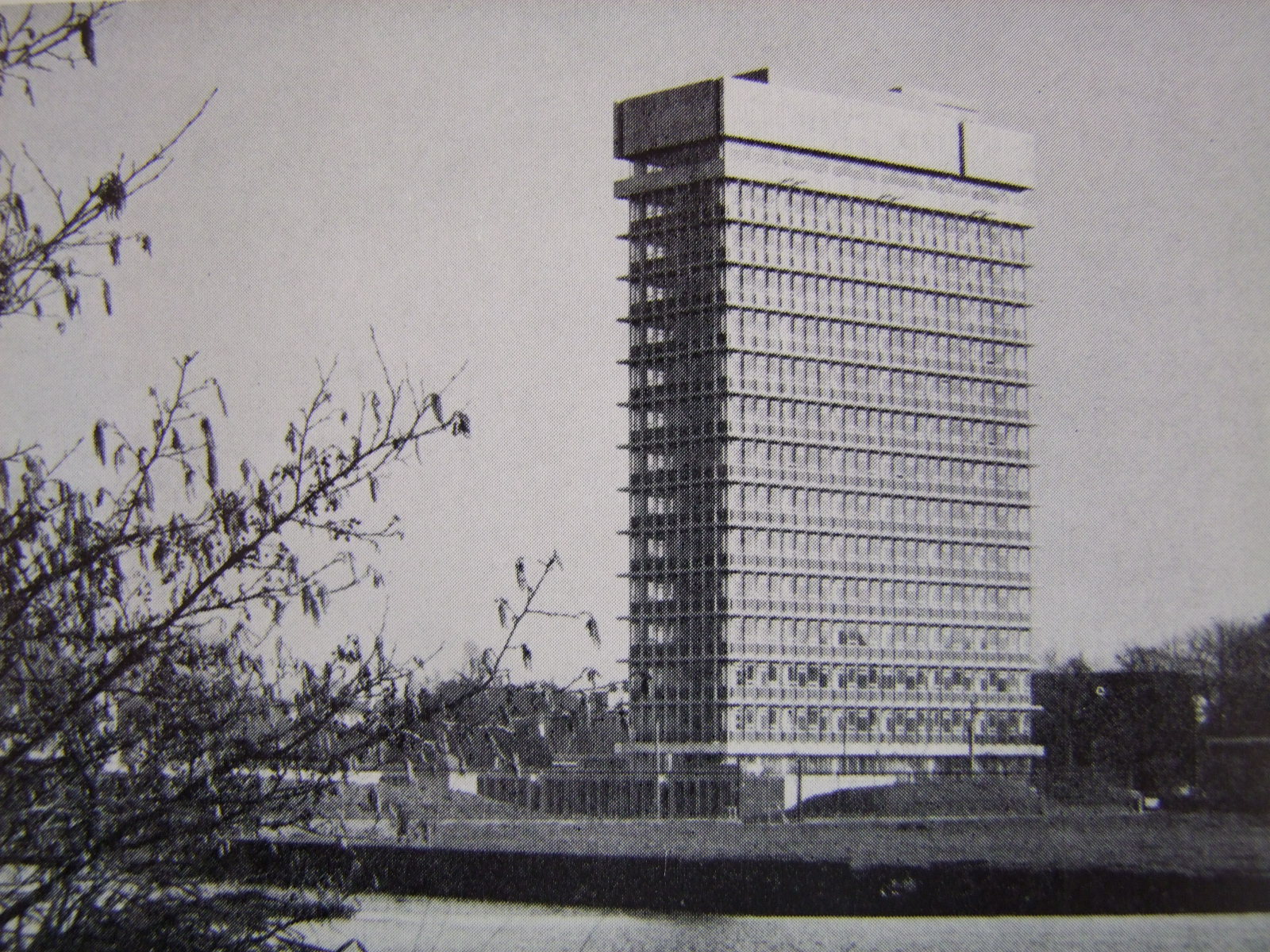
Kieran’s Our City, Our Town Article,
Cork Independent, 27 July 2011
In the Footsteps of St. Finbarre (Part 265)
Attributes of a Skyscraper
“The site provided an opportunity to place the new building in an area rich in space, rivers and greenery. It was realised that this location could provide a good working environment. Its reasonable proximity to the city along with its good approaches made it an acceptable site. The overall idea of a well proportioned simple block evolved as it was appreciated that the magnitude of the project was such, any solution would, to some extent, impose itself as a physical influence upon the area (Patrick L. McSweeney’s introduction, 1968 commemorative booklet to mark the opening of Cork County Hall).”
The information plaque near the entrance of the current Cork County Hall notes that when the building was created it represented a unique creation on the Irish landscape. Its architect, Patrick L. McSweeney (1918-1994) was a native of Ballydehob in West Cork. He joined the Irish Naval Service as a young man and became an Associate of the Institute of Naval Architects in 1944. On leaving the Naval Service, he studied architecture while working in the office of E. P. O’Flynn qualifying in 1949. He was Cork County Council Architect from 1953 to 1975 and designed numerous buildings in Cork City and County while in public and private practice.
Various newspaper spreads appeared in April 1968 showcasing the attributes of the new County Hall. The various functions of the building indicated that departments required an approximate average of 5,000 square feet each. High speed lifts connected them to the ground and to each other. Fifteen floors of office accommodation and one for the Council chamber were required. The overall height was in excess of 200 feet above pavement level. Pile foundations went down more than fifty feet to rock beneath the building.
The gable walls were designed to resist wind loading. Quite distinctive in the external design of the building was the white concrete tracery, which formed a lattice work over all four faces. It concealed the platforms outside the windows, on which each floor was created. They also formed a wind and rain breaker. From an architectural standpoint Patrick McSweeney noted in a commemorative brochure to mark the official opening that it was quite logical that the facade should be broken up into different planes. The building would weather better; it also provided the opportunity for what he deemed a “livelier and more kinetic architecture”.
McSweeney highlighted that other designers in the country at the time had exploited the natural plasticity of concrete to good sculptural effect. Most interesting he noted was the American Embassy building in Dublin where the pre-cast panels were “inter alia, load-bearing external wall panels of pre-cast concrete modelled around the windows”. In the County Hall, the pre cast units were not used structurally but were suspended from the main structure. This was much less expensive and the undiminished effect of these “graceful castings” according to McSweeney was “decisive even at close range, with the natural and inevitable weathering of the anodised aluminium windows”. The glazed area was approximately 7,000 feet. Heat from three oil-fired low pressure boilers located in the separate boiler house began to diffuse through the building’s 900 radiators a year before the opening to speed up the drying process for work such as laying teak parquet flooring. The large number of radiators was explained by the heat losses through single panes of glass.
Prolonged glare and solar heat build-up were reduced by the north-south orientation of the building. The office grid for central corridor access with 17 foot deep offices on either side, full width open planned offices. At Council Chamber level a deliberate attempt was made to break away from the mechanical efficiency of the office planning. McSweeney noted in the commemorative booklet that “a quality of dramatic change was attempted as the meeting place of the elected representatives of the people demanded a classic dignity and monumental self-assurance. It was felt that this could well be provided by a classic colonnade enclosing the floor of the Chamber surrounded by a dignified ambulatory or gallery.”The Chairman’s rostrum with seating and desks for two senior officials was at one end of the room, and behind him was a black marble plaque on which noted Cork sculptor Seamus Murphy had carved the names of the Council’s chairmen since the setting up of the Council on the abolition of the Grand Jury in 1899. Jeremiah J. Howard was its first chairman, William J. Broderick its longest serving (1927-1957) whilst the then incumbent Martin J. Curry T.D. was the oldest member of the council and was occupying the chair for his third time in office. Ten mahogany seats combining with desk accommodated the 48 councillors, 24 to each side of the chamber.
Mr. Harry Wallace produced a thought provoking sculpture for the main entrance foyer depicting the “machinations of computerised administration run riot”. The Cork Examiner on the opening day of County Hall on 17 April 1968 reported:
“Arriving at the County Hall, one is welcomed by a parallel concourse leading to the main entrance, which is highlighted by a daring three-piece in-situ concrete sculpture thrusting upwards.”
To be continued….
Captions:
601a. Cork County Hall, 1968 (source: Cork County Library)
601b. Concrete tracery on Cork County Hall, 1968 (source: Cork County Library)
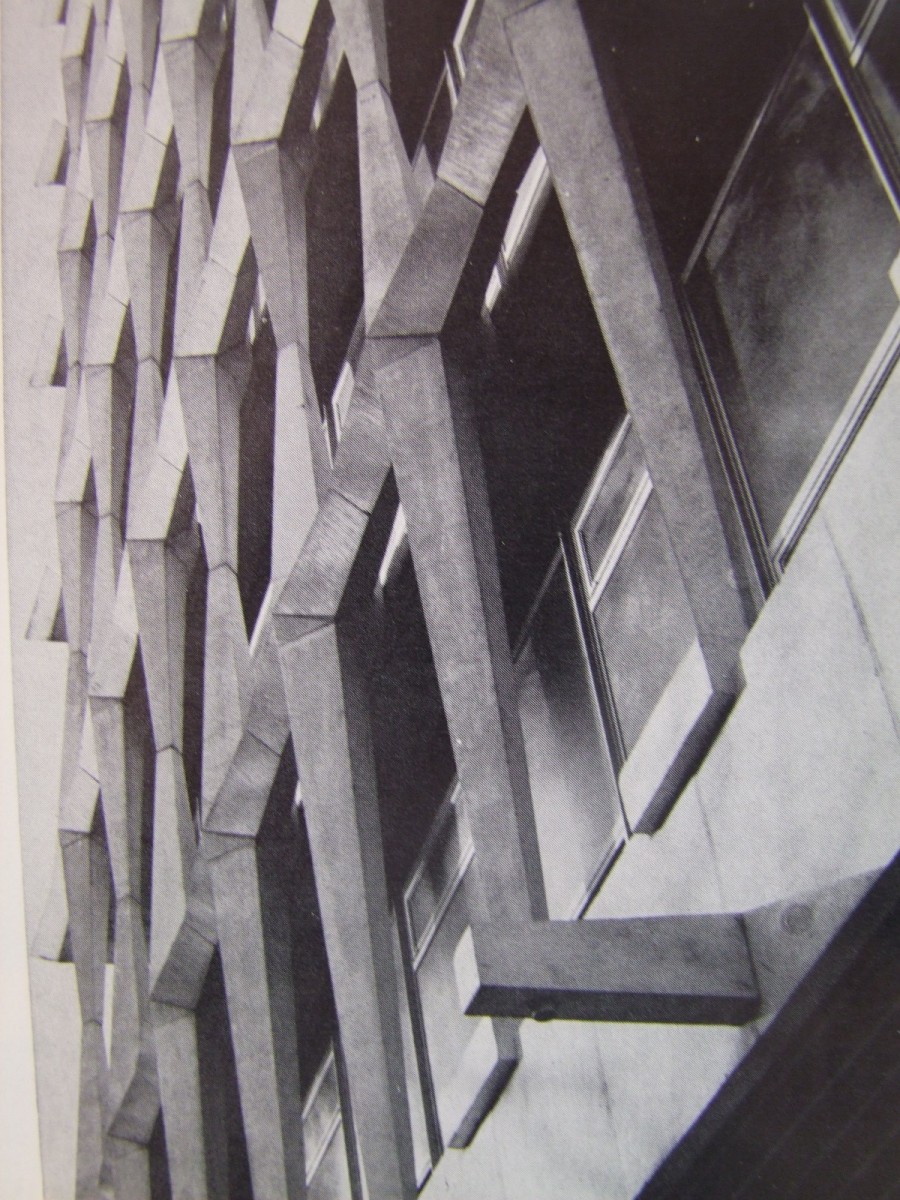
Ballinlough End of Summer Festival, Saturday 27 August 2011
Ballinlough Youth Clubs proudly presents its ‘End of Summer Festival’ on Saturday 27 August 2011. There is a great team organising it, who are very determined to bring the community together and showcasing people’s various talents within the parish of Ballinlough. I love the programme they plan; there is something for everyone – so come along, show your face, support, have a bit of banter, chat, a laugh and fun. It truly is good for the soul!
Some pictures of last years event!
Kieran’s Heritage Week activities, last week of August 2011
Sunday, 21st August, 2011
2pm, Heritage hunt across City Centre, meet at entrance to Gate Cinema, North Main Street for details, co-ordinated by Cllr Kieran McCarthy, duration: 1 hour, free event
4.30pm, Historical Tour of the North Monastery area with Cllr. Kieran McCarthy, meet at gate of school, duration: 1 ½ hours, free event
Tuesday, 23rd August 2011
7pm, Historical walking tour of City Centre with Cllr. Kieran McCarthy, meet at gate of St. Finbarre’s Cathedral, duration: 1 ½ hours, free event
Thursday, 25th August 2011
11am, Perspectives on the History of Douglas, lecture with Cllr. Kieran McCarthy, Douglas Library, duration: 1 hour, free event
Saturday, 27th August 2011
1.30pm; History and Legacy: A historical walking tour through Cork City Hall, with Cllr. Kieran McCarthy, meet at City Hall, Anglesea Street entrance; duration: 1 hour, free event
Kieran’s Our City, Our Town, 21 July 2011
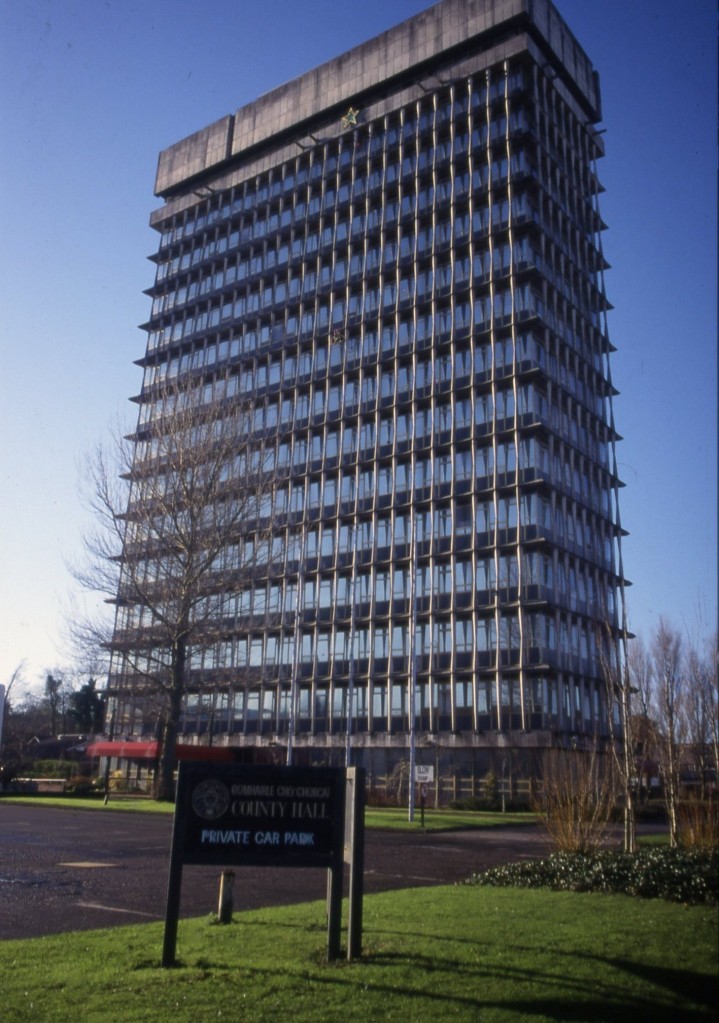
Kieran’s Our City, Our Town Article,
Cork Independent, 21 July 2011
In the Footsteps of St. Finbarre (Part 264)
A Skyscraper to Catch the Eye
“During its history, the city of Cork has enjoyed with great pride some periods when Cork led the way and Dublin followed. We now experience such a moment. The architect, responsible for the new County Hall is Mr. Patrick L. McSweeney, Cork County Council Architect. He has succeeded in providing for the Council a splendid building, one full of character and charm, dynamic, graceful, full of strength, and all on a shoestring. For it cost one third of the cost of Liberty Hall, Dublin (T.F. McNamara on Cork County Hall, Cork Examiner, 16 April 1968).”
In 1960, by the time Michael A. Conlon took up office as County Manager, new reasons were emerging why a new all directorate-encompassing Cork County Council building should be built. One of the most important reasons was the setting up of the Cork Health Authority with jurisdiction over both city and county with its ever growing functions. It needed far more space than the first plans envisaged for the Council’s health services. In August 1963, the council, on the motion of Dan Desmond T.D. sanctioned a building project of a central County Council office and the estimated cost at that stage was £250,000 for a ten-storey building.
Just a year later in August 1964, the tender for the sum of £479,508 from Cork’s largest firm of building contractors, Messrs. P.J. Hegarty and Sons, Leitrim Street, was accepted for the construction of the 16-storey skyscraper. The plans as drafted by County Council architect Patrick L. Mc Sweeney and his colleagues had in the interim gone to Messrs. O’Connell and Harley, Consulting Engineers. Piling began in March 1965 and two methods were used to lay the piles on the bedrock about 50 feet below the surface. By the end of that year the building began to rise above the ground. Peak employment on the site during construction was about 120.
The building was to be the new administrative headquarters for the Cork County Council and for the first time in the history of the Council, all its many departments would now be housed under the same roof. Heretofore the Council was scattered throughout the County. The new Council Chamber was located on the 16th floor and the remainder of the building was utilised for administrative offices.
In terms of design, Cork County Hall was not only Cork’s first ‘skyscraper’, but was also Ireland’s tallest building. It was to join a long list of tall structures that had been appearing throughout Western Europe. Most early skyscrapers emerged in the land-strapped areas of Chicago, London, and New York toward the end of the 19th century. In the post Wall Street collapse in the early 1930s, American buildings such as the Chrysler Building (1930) and the Empire State Building in New York City spurred Europe to follow suit in building skyscrapers. From the 1930s onwards, skyscrapers also began to appear in Latin America. The rest of Europe slowly permitted skyscrapers to be built, starting with Madrid, during the 1950s. Finally, skyscrapers also began to be constructed in cities of Africa, the Middle East and Oceania (mainly Australia) from the late 1950s.
In his critique on Cork County Hall in the Cork Examiner on 18 April 1968, Tony McNamara on Cork County Hall’s height noted:
“Reflecting on the high rise 16 storey nature of the building, one must realise how slowly architects in this country have adapted themselves to the new factor involved in vertical travel within high buildings by means of lifts and elevators. It is noteworthy that for some years now English corporations have utilised many in city sites for 12 storey flat blocks. More recently 17-storey “towers” or “mansions” and in the last five years, 22 storey blocks of flats. This is logical development when we consider the basic cost of lifts and the marginal extra cost of increasing their height of travel.”
In a commemorative brochure on the opening event on 16 April 1968, the architect, Patrick L. McSweeney noted that: “The principle of High Rise was adopted for reasons of function and architectural character and this was the principle, which was adopted to give unity to the project. It also provided the building team with an opportunity – one which was gladly taken- to do something, which so far had not been attempted in our area. Challenge and opportunity were thus key factors.”
A design feature also made it possible to build higher than ever before without the necessity for scaffolding, which would have cost circa £20,000. The cost cutter was to extend the floors beyond the outer walls- so that each successful floor became the work platform for the laying of the next floor on its supporting 28 columns and beams. The beams were 14 inches thick and the floors were comprised of 6 inches of reinforced concrete. The building rose at the rate of one floor every three weeks until it reached the 16th floor. Instead of finishing off the upper storeys, a decision was made, arising out of the expectation of the advent of the worst of winter weather, to consolidate the lower floors installing curtain walling, glazing internal partitioned walls and giving the building a chance to dry out.
To be continued…
Captions:
600a. Cork County Hall before its recent revamp, 2006 (picture: Kieran McCarthy)
600b. Patrick L. McSweeney, Architect, Cork County Hall, 1968 (source: Cork County Hall Library)
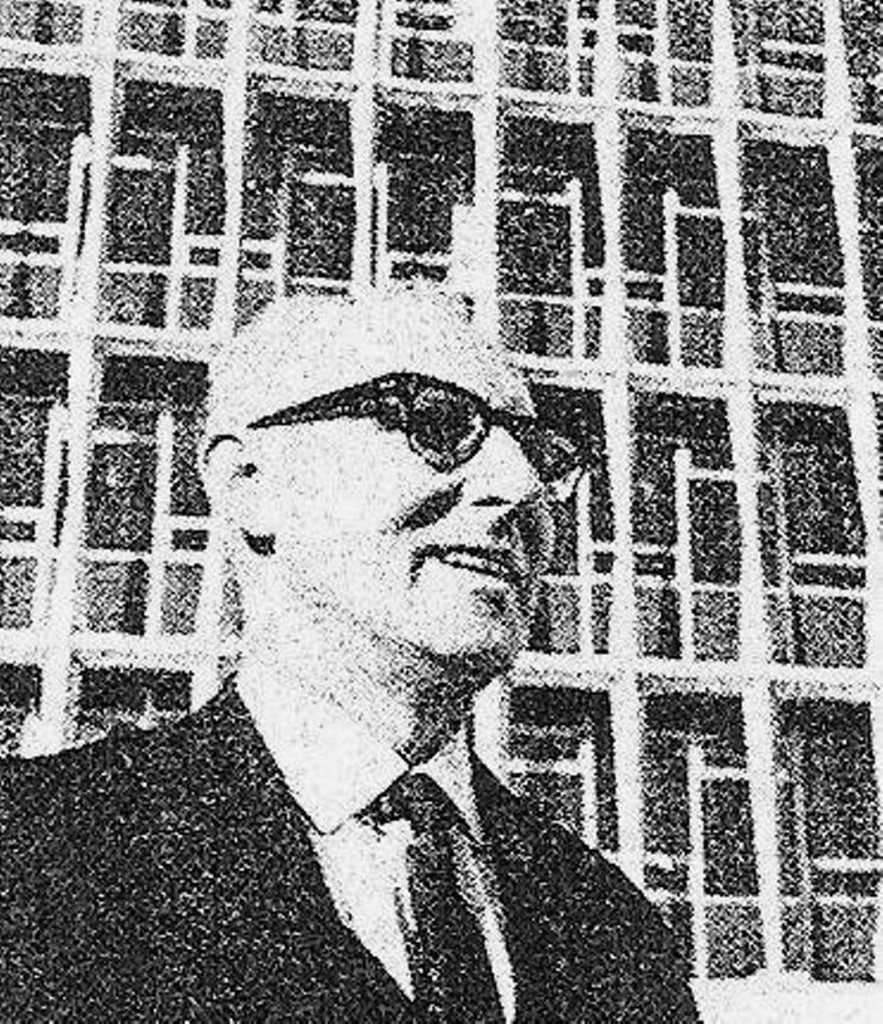
Ceili, Blackrock Community Centre every Tuesday evening till end of August!
Well done to Blackrock Community Association; it was a great start last Tuesday evening (7-9pm) to their ceili season and their new dance platform at the Centre in Blackrock. A ceili is on every Tuesday evening till the end of August! Go and enjoy!
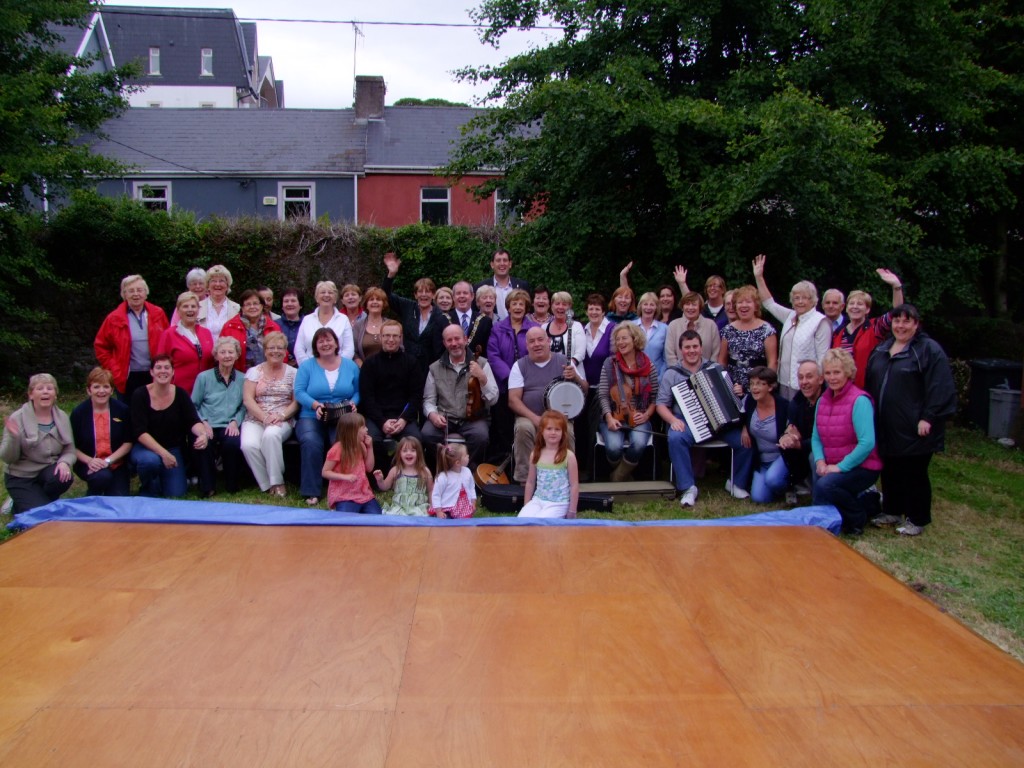
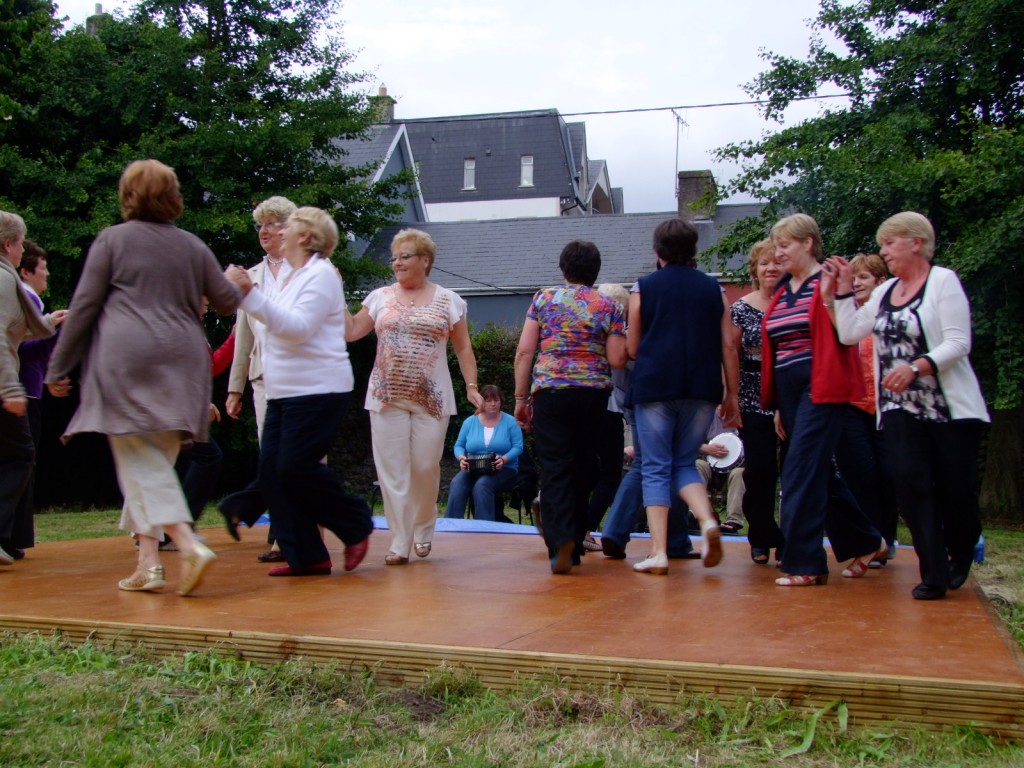
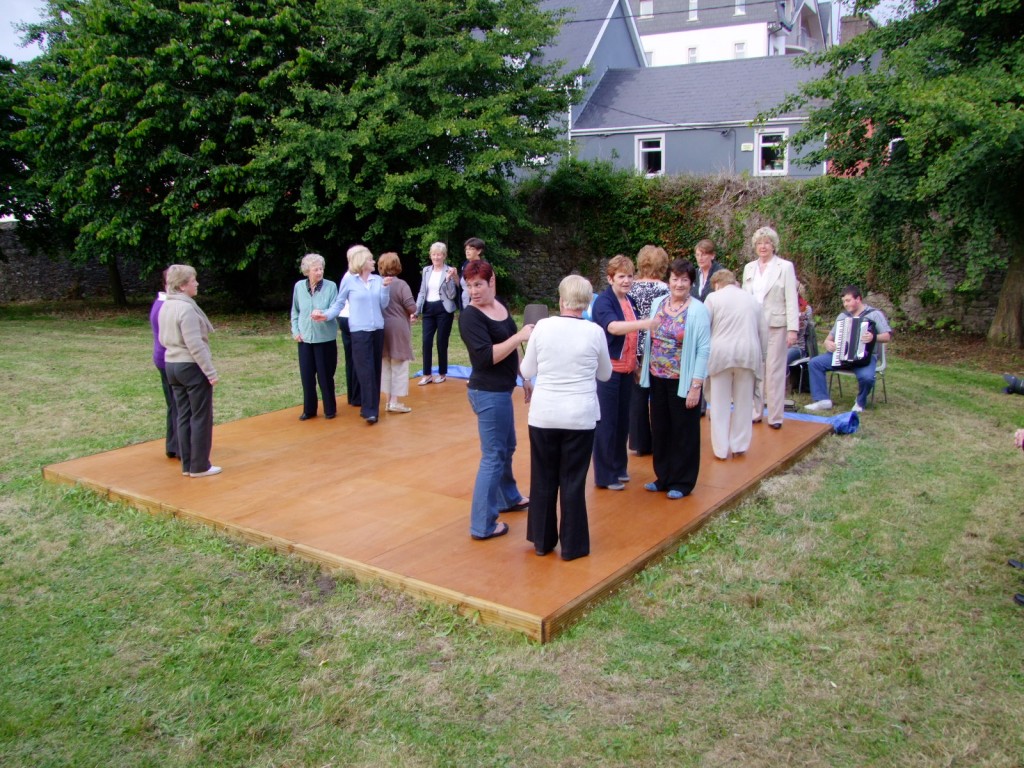
RTE Podcast on the English Market
A fabulously witty and charming journey into Cork City’s labyrinth that is the English Market – A story that weaves it way through two centuries – overcoming fires, famine, rebellion and war.
http://www.rte.ie/radio1/doconone/radio-documentary-corks-hidden-village-english-market.html
Kieran’s Our City, Our Town, 14 July 2011
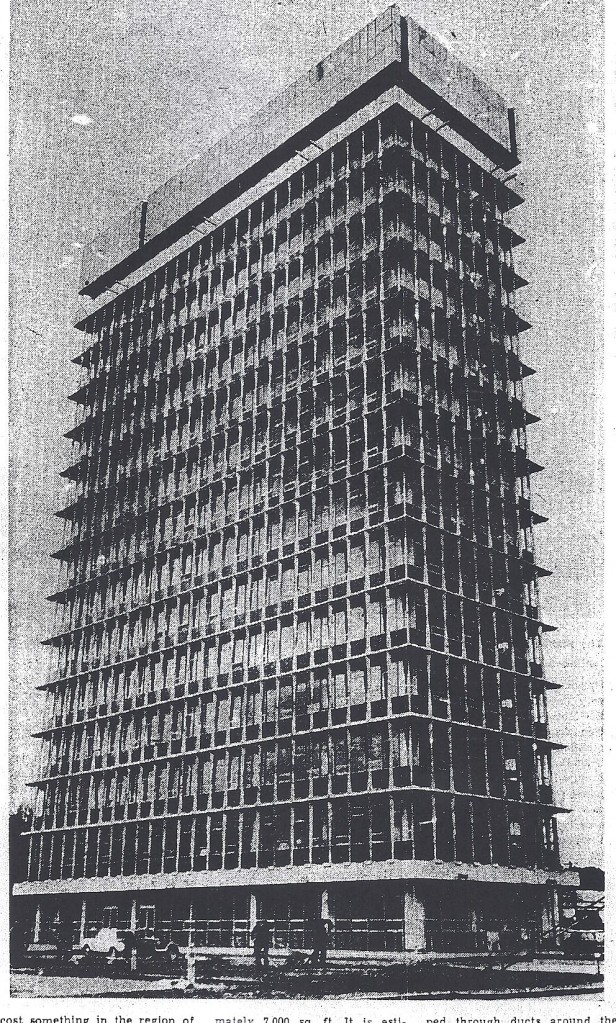
Kieran’s Our City, Our Town Article,
Cork Independent, 14 July 2011
In the Footsteps of St. Finbarre (Part 263)
Planning a Skyscraper
“Cork has recently been described as a city on the move. It is outwards and upwards. It has almost doubled its built-up area during the past decade. Nothing stimulated as much public interest as this new skyscraper in Cork for many years (T.F. McNamara on Cork County Hall, Cork Examiner, 16 April 1968).”
Cork County Hall is big, tall and imposing. It overlooks the weir where the Lee meets the tidal water and dominates the skyline of the city. As a building, it is quite functional. For all its 1960s character and title of one of the tallest buildings in Ireland, the title itself is not perhaps harnessed enough to bring the building beyond its functional uses. The building was built between 1965 and 1968 at the height of an Ireland battling emigration, troubles in Northern Ireland and a country beginning its quest to be part of the European Economic Community (EEC).
Tony McNamara, one time Cork Corporation architect and the author of a great book on Cork’s architecture A Portrait of Cork, penned a praised critique of the new County Hall in the Cork Examiner on 16 April 1968:
“The new County Hall is a building worthy of the highest praise. Architecturally it looks into the future and will dominate the city’s skyline for centuries just as the twin towers of St. Anne’s Shandon and St. Mary’s Cathedral have done for the past 200 years. It is most important that it should continue to enjoy pride of place in the city than it should continue to be the tallest building in the country; it deserves to be rated among the finest works of architecture personifying the jet era in Ireland.”
The architect responsible for the design of County Hall was Mr. Patrick L. McSweeney, Cork County Council Architect. Since the 6 April 1889, the Council had met in the back portion of the top floor of the City Courthouse and prior to the opening of the new building, the members held a fare well ceremony at the Courthouse. The architect in a speech at the opening ceremony of the new building commented of the past: “We do know from the minute books that at the beginning of the present century, the Cork County Council was seriously concerned with the problems of finding adequate accommodation for its meeting and staff. A site was purchased prior to World War II, but with the rapid post-war expansion of the local government services, it was decided that the site located in the city centre was entirely inadequate.”
It was in the City Courthouse as well that the County manager, secretary and accountant had their offices. The County Engineer shared an old house on the North Mall with the architect and planning officer but the assistant engineers were located at Cross Street. Rates were paid at an office over a shop in Liberty Street and Motor Tax was paid at an office over a bank in Washington Street, both being locations that had been considerably improved upon leading up to the 1960s. The County Solicitor shared offices with road engineers at Parnell Place. A former residence at Fr. Mathew Quay housed the South Cork Housing and Sanitary Department. The County Committee of Agriculture’s offices in Liberty Street were too small for meetings, so officers and their files had to move to the courthouse at least once a month. The County Vocational Educational Committee, based on the South Mall, solved a similar problem by moving for an afternoon to the City’s School of Commerce. The self-directed Health Authority had administrative offices apart from those at the City Hall, in four locations.
In 1953, when the idea of a central headquarters for the Council’s officers was first put forward by the first County Manager Joseph F. Wrenne, the times and finances were not considered right for such a project. Owen Callanan who succeeded Joseph Wrenne got the Council’s approval in principle to one big roof for all departments in 1954. This allowed a young architect, only a year installed in a Council office, to start estimating future requirements and sketching plans.
When the first plans were displayed in 1959, they showed a very different approach to that later adopted. Even the orientation was different. The proposed building was to be ten storeys high, 116 feet tall, 118 feet long and only 42 feet wide. Its long frontage was to face the Carrigrohane Road and the cost was to be £137,000. The County Hall as finally designed was 211 feet tall, 131 feet long and 46 feet wide and its main entrance faced the city. The earlier design provided accommodation for health clinics; the adopted one did not.
The site was acquired by the Council from John A. Wood. Long before the first sod was turned, has a history of its own. The greater part of it was once the headquarter grounds of the Munster Football Association (founded in 1922) and it was there that Dan O’Mahony and Charlie Stack had a memorable all-in wrestling match some 30 years previously, an event long remembered by spectators (I’m looking for further information on this as well as County Hall).
More next week…
Captions:
599a. Cork County Hall, 1968 (picture: Cork City Library)
599b. Recent sunset from top of County Hall of Carrigrohane Straight Road and River Lee (picture: Kieran McCarthy)
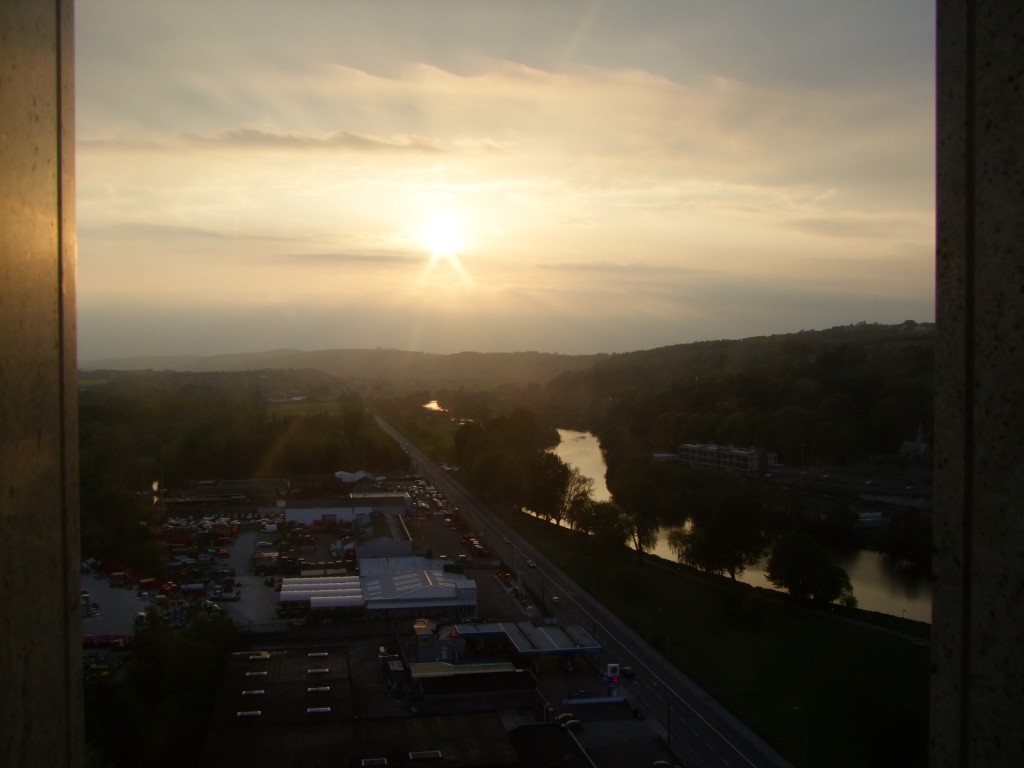
Meeting the Minister for Arts, Friday 15 July, 2pm
Minister for the Arts, Heritage and the Gaeltacht, Mr. J. Deenihan TD, would like to meet with artists and arts groups in Cork City and County on Friday, 15th July, 2 pm, in the Millennium Hall, City Hall, Cork.
The format for the meeting is as follows;
– Introduction by Liz Meaney, Arts Officer Cork City Council
– Opening remarks by Minister Deenihan
– Meeting opened to the floor
– Closing comments by Ian McDonagh, Arts Officer Cork County Council
Please note that the meeting will last one hour, with door open from 1.30 pm.
Kieran’s Comments, Re: Docklands, Cork City Council Meeting, 11 July 2011
Great to see Docklands is still alive. Docklands is a great template to view what went wrong in Ireland but perhaps in this new Ireland it directs us to how we should rebuild Ireland.
I would love to see the Docklands having an enormous Tyndall institute, a place where ideas on where Ireland needs to move towards can be nurtured. Recently, I was pursuing work on Rubicon Centre on the CIT Campus and some of the business development work that is performed there. Over 14 years, they have had 180 start-up businesses, 70% are still operating, 50% are trading internationally, 40% are classified as “high potential start-ups” – these are the phenomenal results generated by their Genesis Programme. I see from recent statistics that exports are up 6pc, manufacturing output is up by 10pc. That’s coming from the productive element of the Irish economy and it’s not being reported. Where other countries’ exports are falling behind, Ireland’s are growing.
Medical devices and life sciences:
Not many people realise this, but Ireland actually boasts the second-highest concentration of medical devices firms anywhere on the planet – and this is one of the few areas where there’s a strong proportion of indigenous companies. Firms operating in the medical devices and life sciences areas are actually 95pc export oriented and there’s an even split between the number of indigenous and multinational firms in the medical devices sector. The sector in Ireland grew 9pc in the past year and it is a very stable area, presenting more opportunities than most people perceive. Docklands could plug into this.
Nanotechnology:
Nanotechnology, the science of ultra-micro electronics and pharmaceuticals at a sub-atomic scale, has the potential to be a major engine of growth in the Irish economy and exports could be doubled from €15bn today to €30bn by 2015. There are thousands of people working in electronics and pharmaceutical firms across the country, nanotechnology could make Ireland a leader in the future of technology and future wonder drugs.
10pc of Ireland’s exports are coming from products enabled by nanotechnology and these would transcend three core industries: ICT, medical devices and biopharmaceuticals. Docklands could plus into this.
Google Companies:
Ireland has again assembled the heart and lungs of the cloud industry. Google has major operations here, so too has Amazon.com and IBM, and last year Microsoft took the wraps off a massive $500m cloud computing data centre in west Dublin. Docklands should go after these companies.
Green Technologies:
Docklands could be a natural home for the future green technology industries. According to Enterprise Ireland, the Irish clean-tech sector employs 6,800 people and its exports are valued at $4bn. The potential of this project, which builds on our existing assets and infrastructure, is that it can assist in the transformation of our economy.
So there is alot that those who are heading up Docklands need to reflect on.